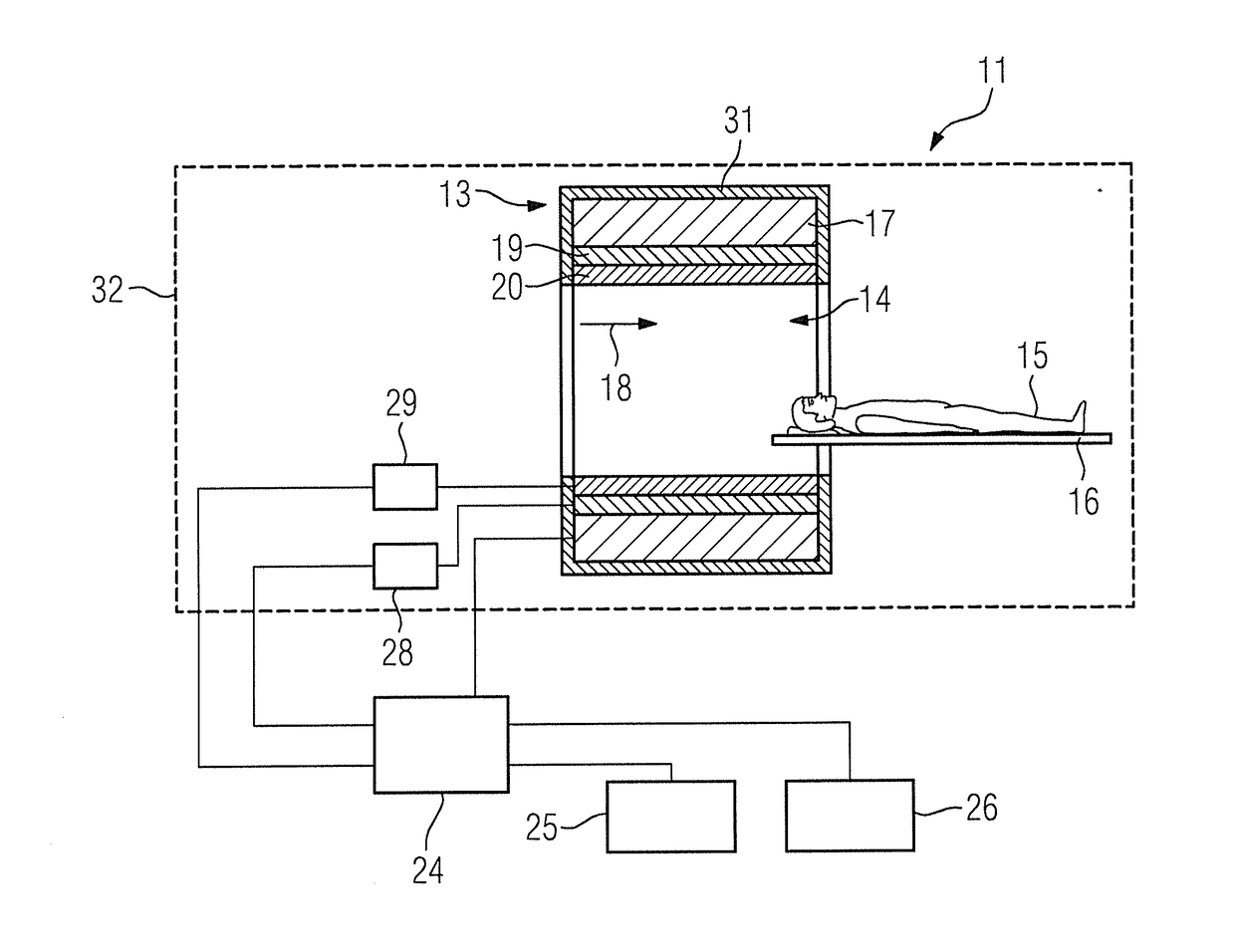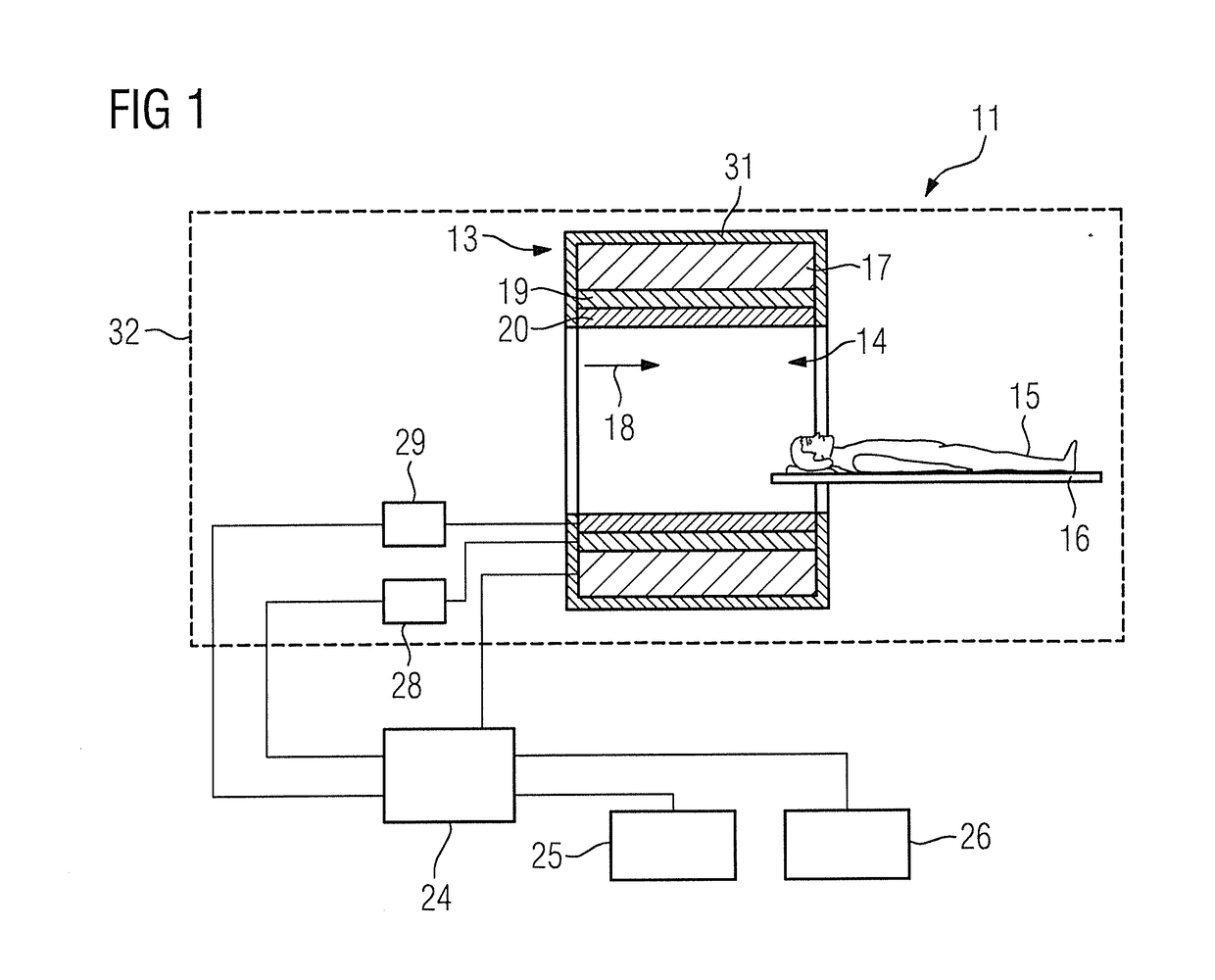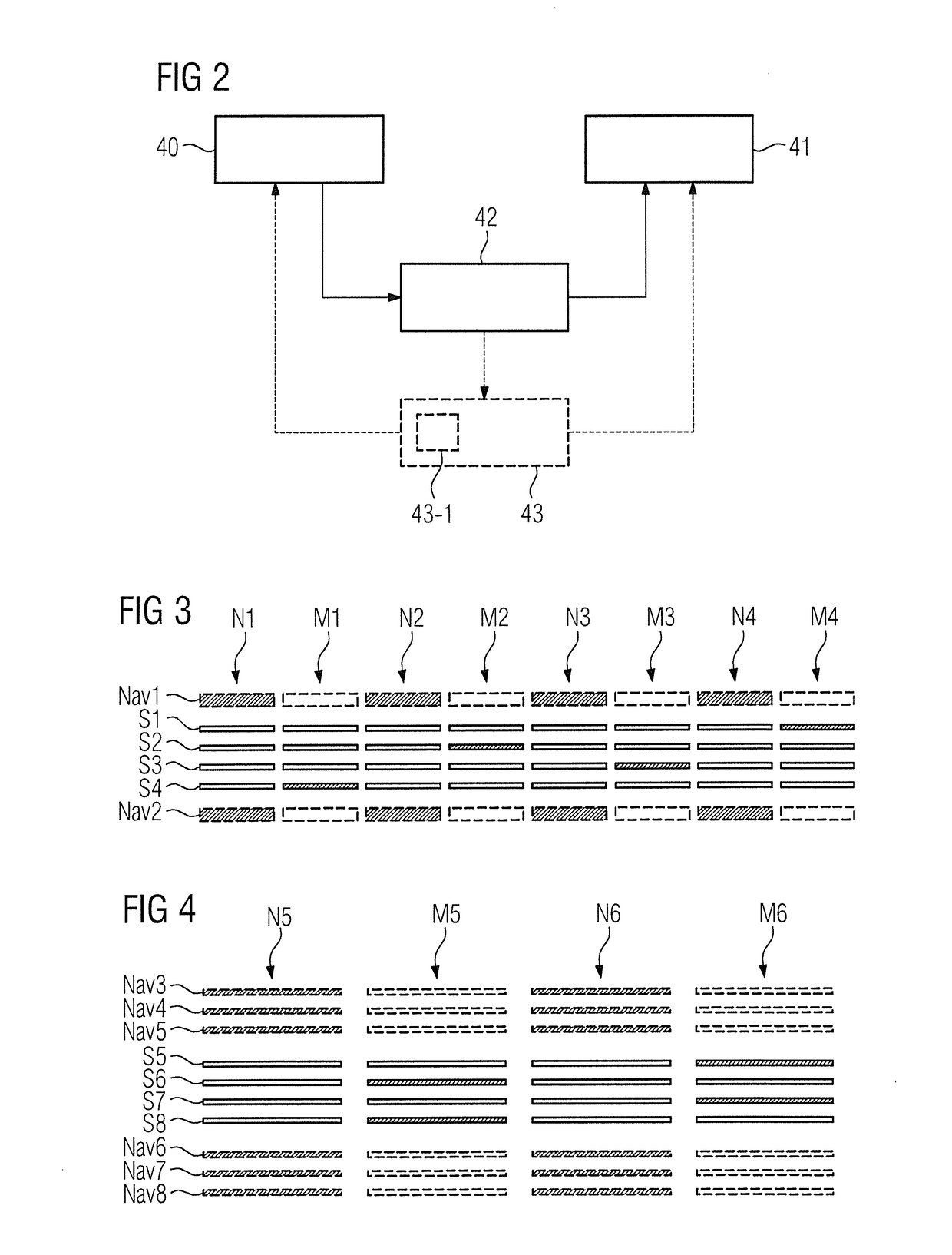Method and apparatus for magnetic resonance imaging
- Summary
- Abstract
- Description
- Claims
- Application Information
AI Technical Summary
Benefits of technology
Problems solved by technology
Method used
Image
Examples
second embodiment
[0078]FIG. 3 is a schematic illustration of the image scans and navigator scan according to a method according to the invention.
[0079]FIG. 3 shows an exemplary alternating sequence of navigator scans N1, N2, N3, N4 and image scans M1, M2, M3, M4. For each of the scans, in each case the at least one slice, which is excited and read out in the respective scan is shown. This at least one slice is then depicted for the respective scan as a filled-in rectangle, while the other slices are depicted as not filled-in.
[0080]The examination region shown in FIG. 3, from which the magnetic resonance scan data is acquired, includes by way of example four scan data slices S1, S2, S3, S4. Two navigator slices Nav1, Nav2 are arranged on opposite sides of the examination region. In this context, the first navigator slice Nav1 is arranged above the examination region, wherein the second navigator slice Nav2 is arranged below the examination region.
[0081]In the case shown in FIG. 3, the navigator slice...
third embodiment
[0085]FIG. 4 is a schematic illustration of the image scans and navigator scan according to a method according to the invention.
[0086]FIG. 4 shows the example, two navigator scans N5, N6, which alternate with two image scans M5, M6. As in FIG. 3, once again the slices that are excited or read out are depicted as filled-in and the slices that are not excited or read out slices are depicted as not filled-in.
[0087]Once again, the examination region should include four scan data slices S5, S6, S7, S8. However, unlike the example in FIG. 3, in each diagnostic imaging scan M5, M6 in each case two scan data slices S5, S6, S7, S8 are excited and read out with a multiband factor of two.
[0088]Each navigator scan N5, N6 has an example, a recording of six navigator slices Nav3, Nav4, Nav5, Nav6, Nav7, Nav8, wherein three first navigator slices Nav3, Nav4, Nav5 are arranged on a first side of the opposite sides of the examination region and three second navigator slices Nav6, Nav7, Nav8 are arra...
fourth embodiment
[0090]FIG. 5 is a schematic illustration of a phase correction according to the method according to the invention.
[0091]FIG. 5 depicts a possibility for illustrating a slice-specific extraction of phase correction parameters for individual scan data slices 56, 57, 58 from two navigator slices 54, 55. In this context, for the example in FIG. 5, the scan data slices 56, 57, 58 and the navigator slices 54, 55 should be positioned in a head of the object to be examined 15. In this context, the arrangement of slices is shown in the image window at the upper right image edge in FIG. 5.
[0092]For the example in FIG. 5, the scan data slices 56, 57, 58 are acquired by means of an acquisition scheme at three different time points 59, 60, 61. The navigator slices 54, 55 are excited and read out simultaneously by a multiband-radio-frequency pulse with a multiband factor of 2.
[0093]It is now possible to determine a time-dependent first phase value from the first navigator slice 54, while a time-d...
PUM
 Login to View More
Login to View More Abstract
Description
Claims
Application Information
 Login to View More
Login to View More - R&D
- Intellectual Property
- Life Sciences
- Materials
- Tech Scout
- Unparalleled Data Quality
- Higher Quality Content
- 60% Fewer Hallucinations
Browse by: Latest US Patents, China's latest patents, Technical Efficacy Thesaurus, Application Domain, Technology Topic, Popular Technical Reports.
© 2025 PatSnap. All rights reserved.Legal|Privacy policy|Modern Slavery Act Transparency Statement|Sitemap|About US| Contact US: help@patsnap.com



